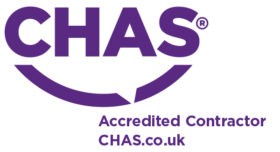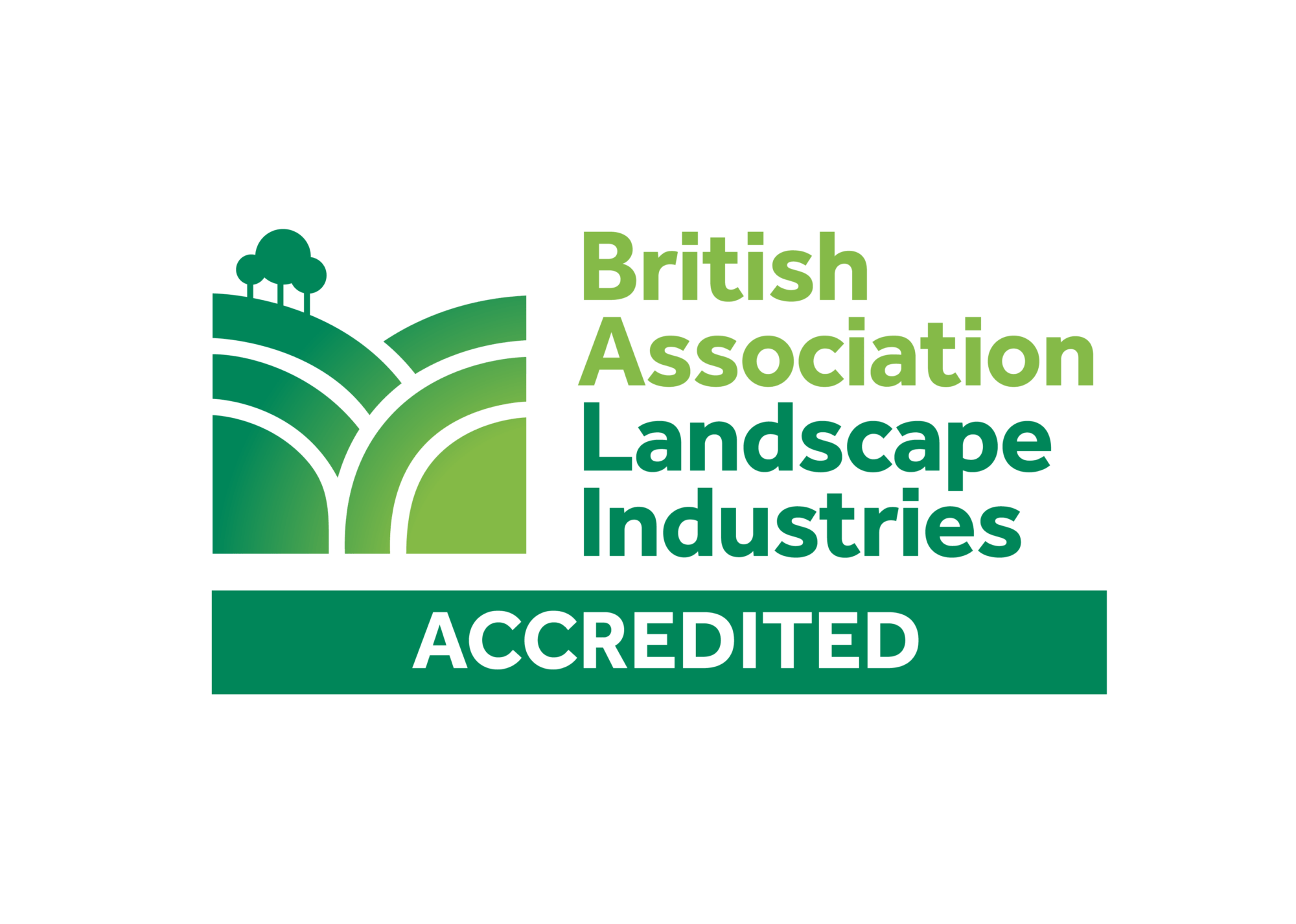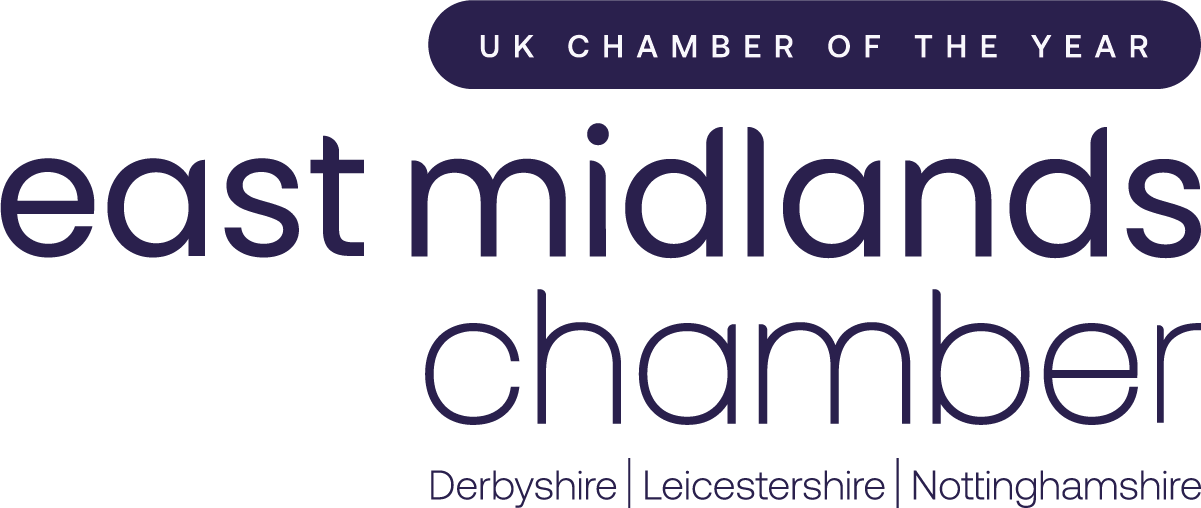Railings come in all different shapes and sizes for a wide range of uses. But what are the different types of metal railings?
With so many metal fencing options to choose from, it can be hard to know what you need for optimal security and aesthetics. So, we’re here to help you decide between the types of metal railings.
Sometimes, fencing is simply there to look good, other times it’s needed to keep nuisances out and improve safety. Firstly, you need to decide which is more important to you. Do you want high security fencing? Or something that adds a unique look to your premises? Or a balance of safety and style?
One thing that you always need to consider, is compliance to health and safety laws. It’s important you choose a railing provider than understands the regulations you need to abide by, to avoid expensive replacements down the line.
At Alpha Rail, we have over 35 years of experience in the fabrication of railings, and we know the regulations inside and out. We also know a lot about the different types of metal railings, so let’s take a look at your options.
Types of Metal Railings
Here is a list of some the different type of rails that we manufacture here at Alpha Rail.
Vertical Bar Railings
Vertical bar railings are a traditional type of fence railings that you can see in cities across the world.
The simple design comprises of several metal bars sitting vertically. These vertical bars are stabilised with horizontal bars sitting across the bottom of the fence panel and near the top. The bars can be supplied with a pointed or spiked top when at a height above 1.8m to deter climbing.
This classic railing fence panel design is strong and versatile to add another layer of security to an existing wall, or as standalone fencing.
Vertical bar railings are difficult to climb making it more secure than wire fencing when used as perimeter fencing, particularly for retail, businesses and housing.

Vertical bar railings are a classic and secure fencing option.
Bow Top Railings
Bow top railings are similar to vertical bar railings as it features vertical infill bars.
The smooth top makes this type of fence perfect for schools, parks and children’s play areas as there’s no sharp edges to cause injury.
Additionally, the fence panels in bow top railings have lots of space between the bars, meaning there is lots of visibility through the fence. For this reason, it is also popular for use in housing and for businesses.
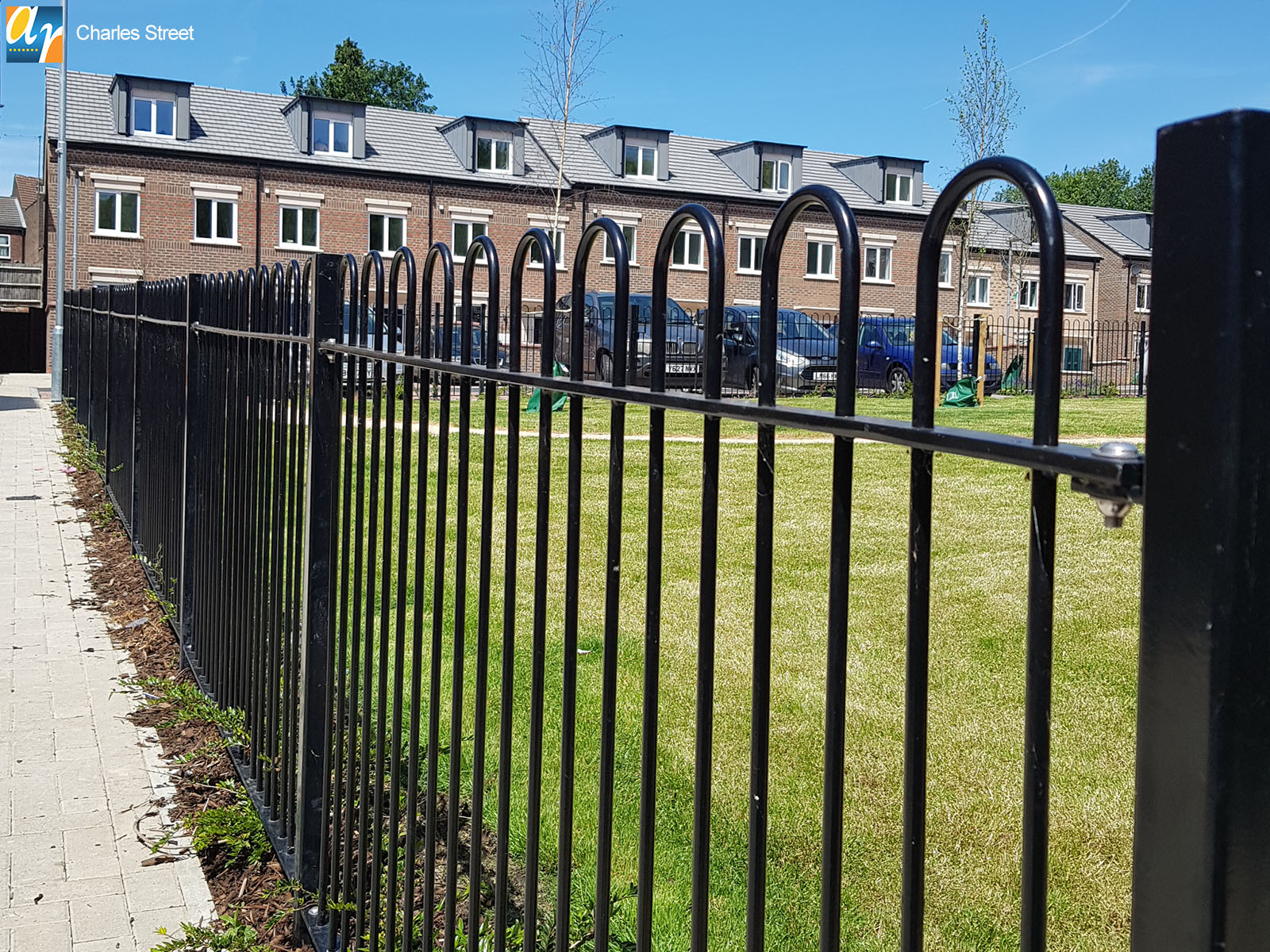
Bow top railings have rounded tops, making them great for schools, parks and playgrounds.
Flat Bar Railings
Flat bar railings also use mostly vertical bars, however the key difference in this fences’ design, is the shape of the bars. Instead of using rounded bars, they are flat. This creates a more contemporary look.
The unique look makes flat bar railings popular with landscape architects looking for a more modern appearance.
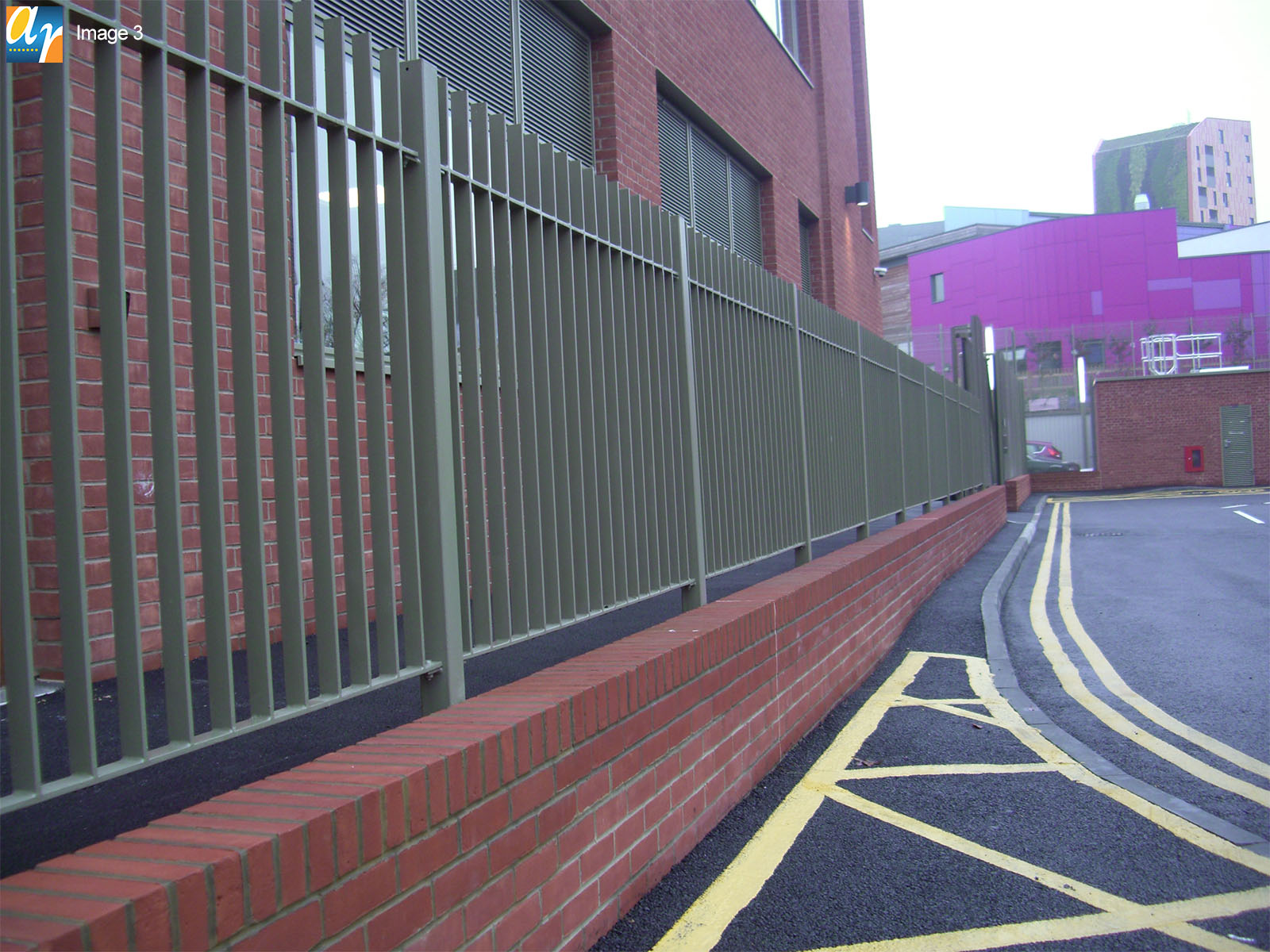
Flat bar railings are aesthetically pleasing and difficult to climb.
Flat Top Railings
Flat top railings remove the harsh edges of the infill bars by placing a horizontal bar at the top of the fence panels for a smooth finish.
This simple design is pleasing to the eye thanks to the clean lines. These are a good option to choose if your railings are used on stairs or walkways as they can be held onto easily for extra support.
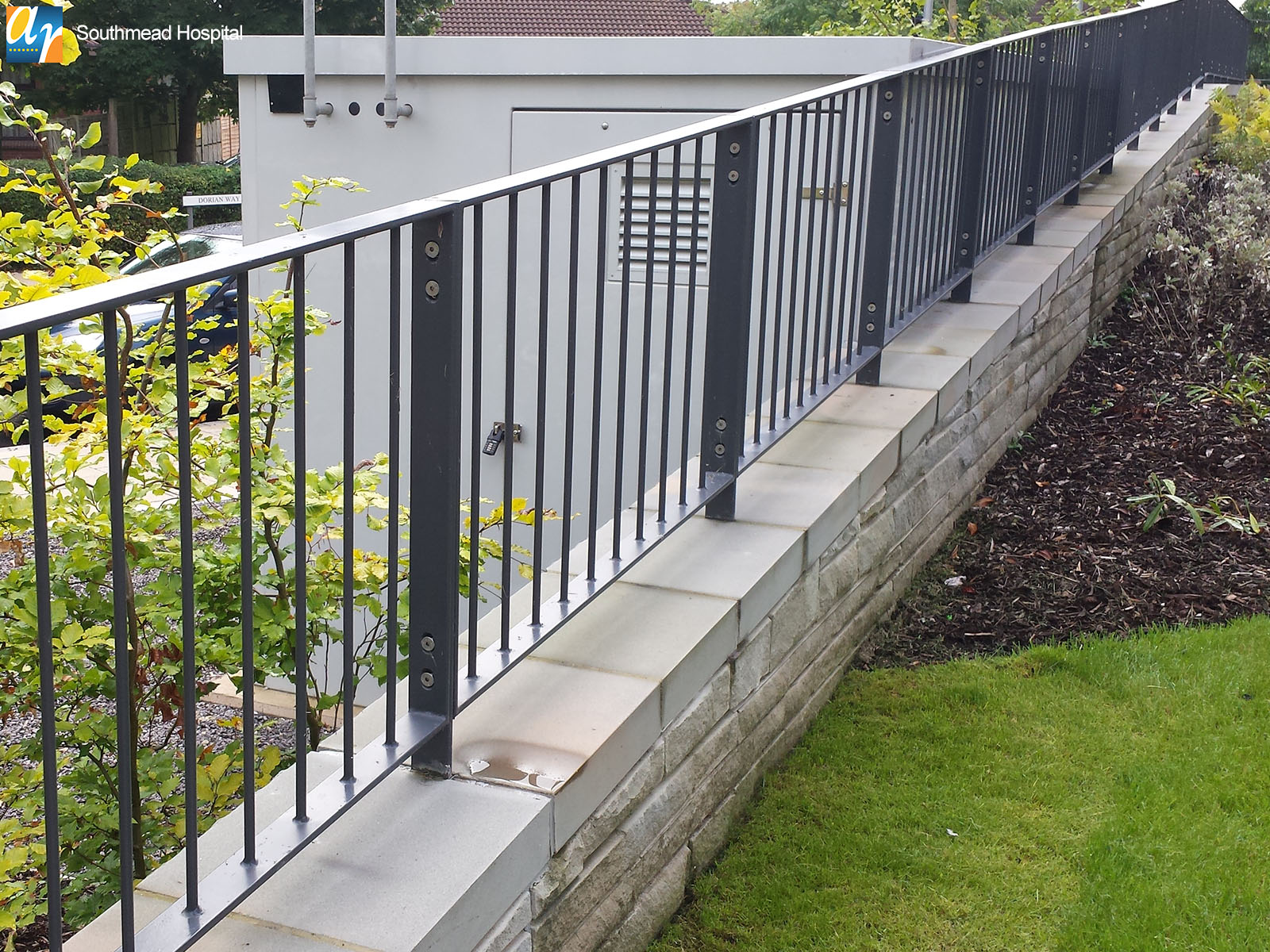
Pedestrian Guardrail
Pedestrian Guardrails are primarily used to guide pedestrians to safe crossing points along busy highways. They help to prevent pedestrians crossing the road at dangerous points by creating a barrier between the road and the path until it’s safe.
To meet British Standard BS 7818, pedestrian guardrails must stand at a height of 1050mm above ground level and be set back 450mm from kerb face. They are also typically set in a 300mm x 300mm x 450mm deep foundation.
While they are a cheap and effective way to ensure safe crossing, this is not their only use. Pedestrian guardrails can also be found in stock yards and warehouses to designate safe walkways. You may also notice them around the perimeter of sports pitches to stop fans and their furry friends getting onto the pitch.
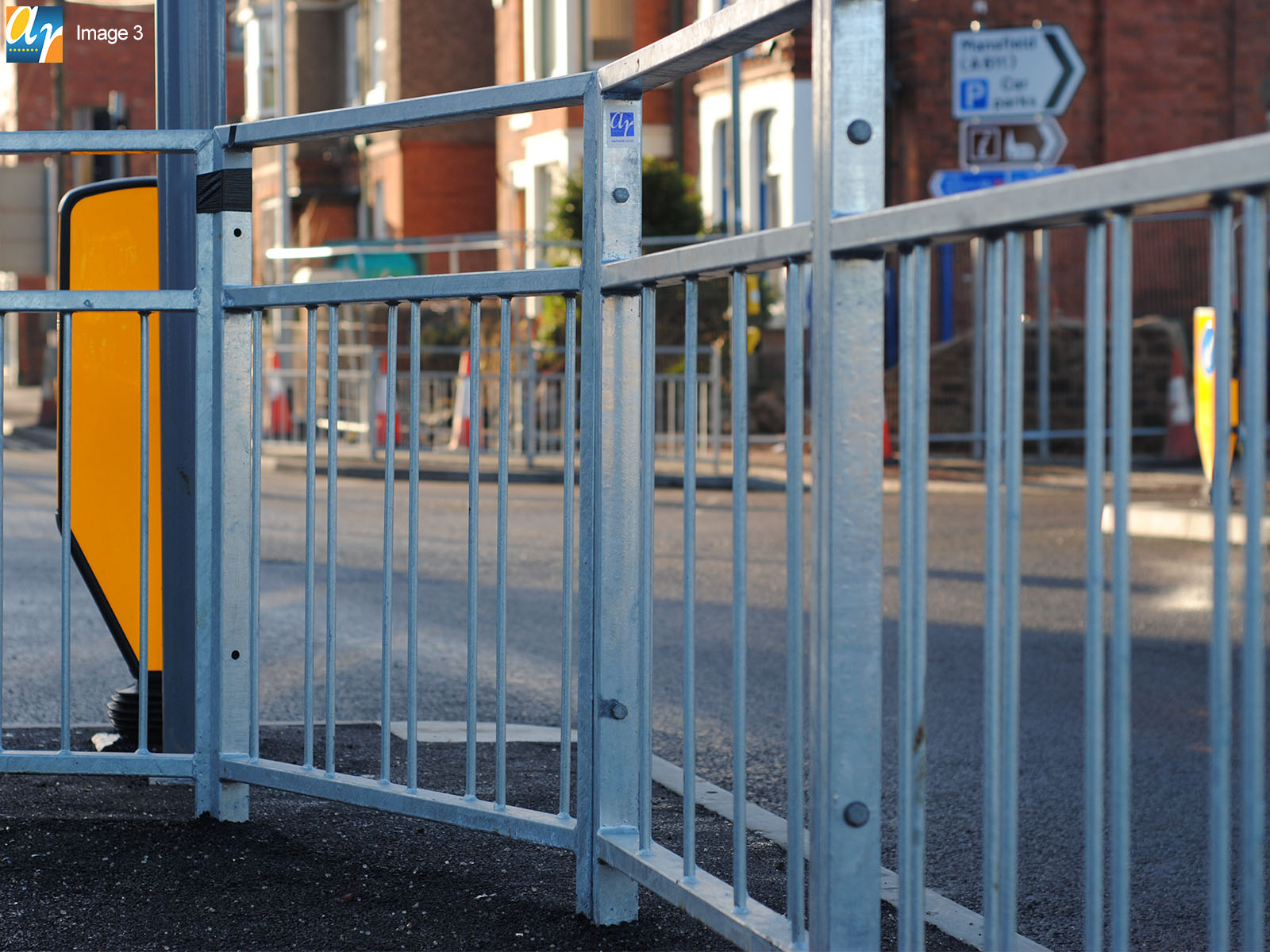
Keep pedestrians safe with guardrails
Metal Estate Fencing
Metal estate fencing is made of wide-set horizontal bars, with vertical bars between each panel for stability. This creates a traditional Victorian look that is frequently used on country estates and deer parks.
This type of fence has large gaps between bars so the risk of getting stuck in between the railings is low. This also allows for small animals to pass through while acting as a barrier for larger wildlife, like cattle.

Metal estate fencing has a traditional look perfect for country estates and housing developments.
Grating Fence
Grating fence has both vertical and horizontal bars that are placed closely together to create a ‘mesh’ effect. The small space between bars makes grating fence one of the most secure types of metal railings as it’s incredibly strong and very difficult to climb.
At Alpha Rail, the mild-steel gratings and louvred grilles are made by an advanced electrofusion process to deliver maximum strength. Grating fence is a great option to choose for any premises that needs high security, such as schools, airports or even at theme parks to stop visitors getting too close to machinery.
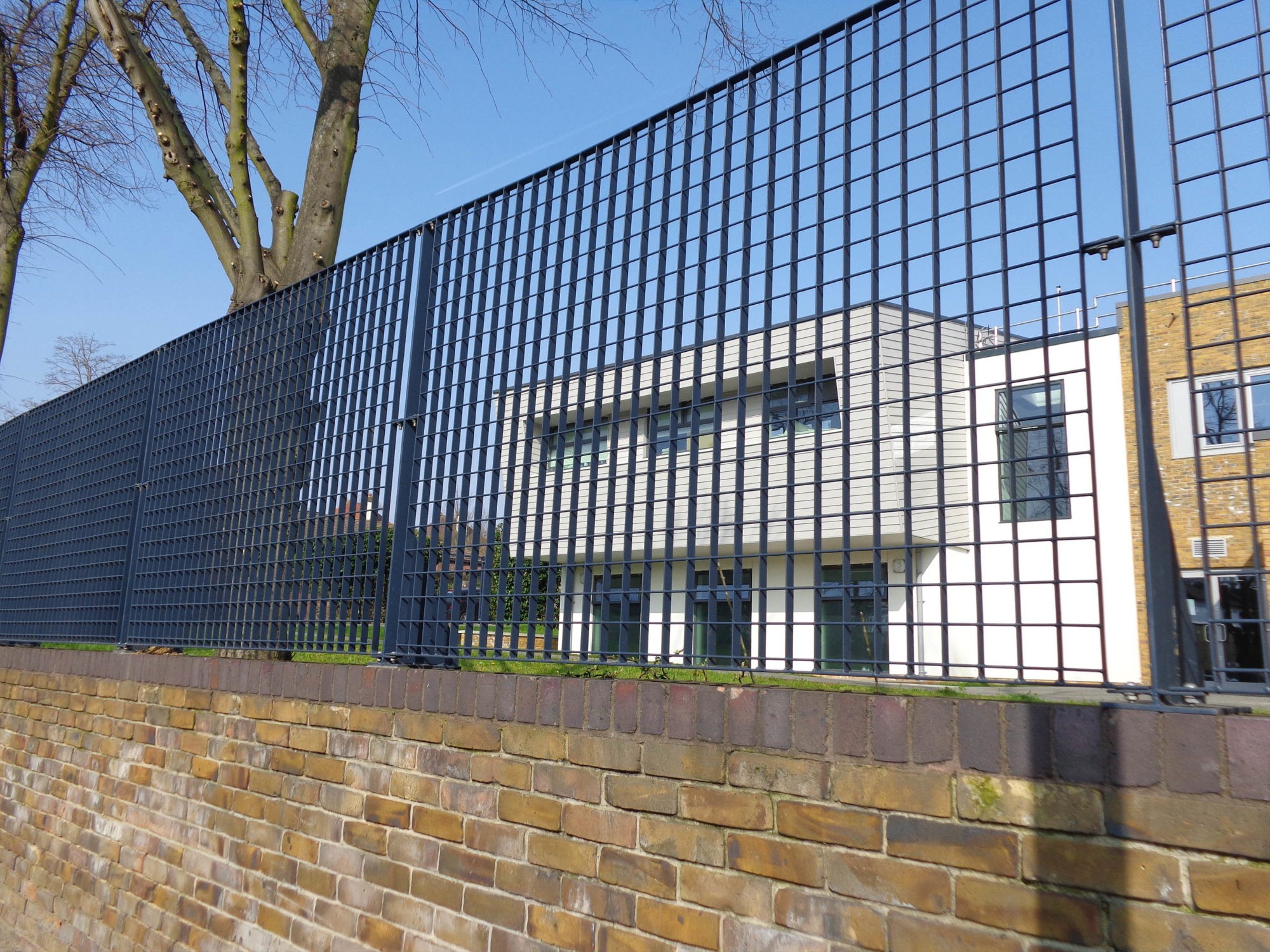
Grating fence is a high security option to keep out unwanted visitors
Alpha Rail Fencing and Railings
At Alpha Rail, we offer lots of types of metal fence railings, including all of the above.
We are able to fabricate railings of almost any size to meet your specifications while offering technical advice where needed.
All our railings are made to a very high standard, following industry regulations at all times. As standard we offer a galvanising service to further improve the quality of your railings so they can stand the test of time. All materials can also be polyester powder coated in a RAL colour of your choice.
Interested in our range? Why not get in touch to discuss your requirements and find out more?


